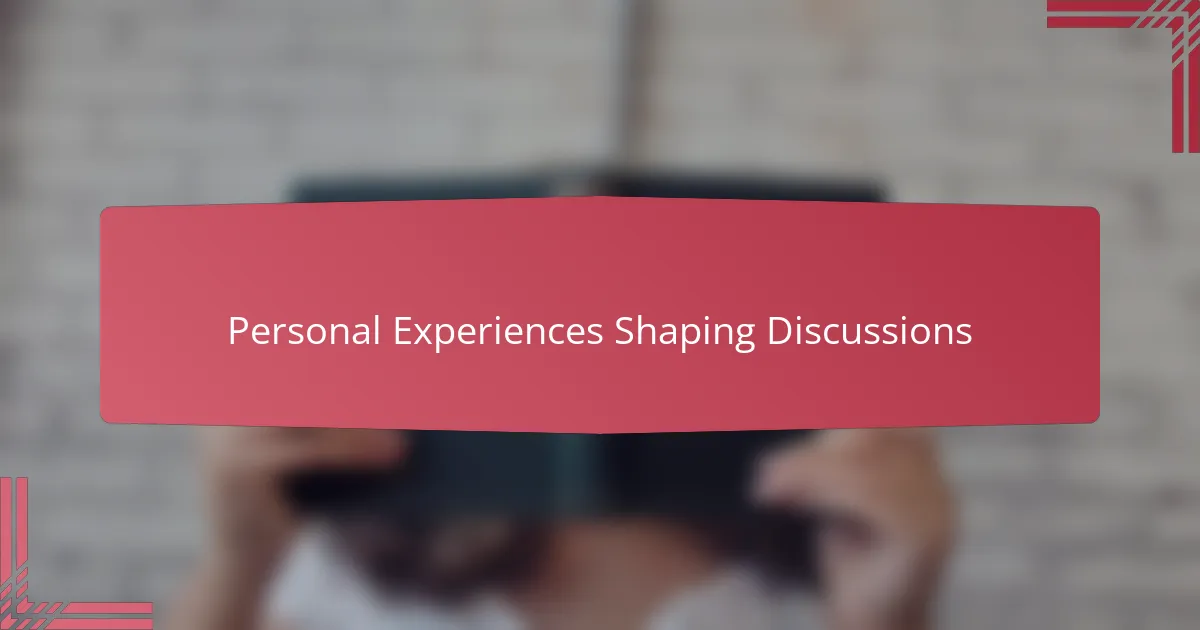Key takeaways
- TED Talks combine personal narratives and research, making complex social issues relatable and urgent for activists.
- Incorporating TED Talks in classrooms fosters active engagement and critical thinking among students, turning passive viewing into meaningful discussions.
- Selecting diverse TED Talks encourages rich debates and challenges perspectives, enhancing the quality of dialogue.
- Personal experiences shared by educators can open pathways for vulnerability and deeper connections in discussions, enriching the learning environment.

Understanding TED Talks for Activists
TED Talks are more than just presentations—they’re powerful stories that can ignite passion and inspire action. When I first watched a TED Talk on social justice, I felt a surge of motivation, realizing how a single voice can ripple into larger conversations. Have you ever wondered why some talks stick with you long after you’ve watched them?
For activists, TED Talks offer a treasure trove of perspectives and strategies that challenge the status quo. They blend personal narratives with research, making complex issues feel relatable and urgent. I’ve found that understanding these layers helps me frame my own discussions more effectively, connecting with my audience on a deeper emotional level.
What struck me most is how TED Talks encourage us to listen as much as we speak. They model vulnerability and conviction simultaneously, showing that genuine dialogue can shift mindsets. This duality is essential for any activist hoping to foster meaningful change through conversation.

Integrating TED Talks in Classrooms
Integrating TED Talks into the classroom transformed the way I approached discussions. Instead of lecturing, I played talks that challenged my students’ assumptions and sparked curiosity. Have you ever noticed how a well-chosen video can ignite a room full of silent students into passionate debate?
I remember the first time I assigned a TED Talk for homework—it wasn’t just about listening; it became a shared experience. Students returned eager to unpack ideas, question perspectives, and even relate the talk to their own lives. This shift from passive reception to active engagement was, in my view, a game-changer.
What I appreciate most is how TED Talks offer a springboard for critical thinking while keeping the conversation accessible. They provide trusted voices that help students confront difficult topics without feeling overwhelmed. Would you agree that giving learners this kind of scaffold makes activism feel achievable rather than intimidating?

Selecting TED Talks for Discussion
Choosing the right TED Talks for discussion always feels like a bit of an art to me. I look for talks that don’t just inform but also provoke — those that spark curiosity and a personal connection. Have you ever noticed how certain speakers seem to reach you on a deeper level, making complex issues suddenly feel urgent and relatable?
I like to select talks that offer diverse perspectives, ensuring the conversation doesn’t become one-sided. For example, one time I picked a talk on climate justice alongside another on indigenous activism — the contrast opened up rich debates that students didn’t expect but really needed. It’s those moments of surprise and challenge that make discussions memorable.
Sometimes, I ask myself which talks will push my audience beyond comfort zones without shutting them down. Balancing vulnerability with conviction is tricky, but when a talk manages that, it becomes a powerful catalyst. Isn’t it amazing how a carefully chosen video can quietly transform the energy in a room?

Techniques to Facilitate Meaningful Dialogue
One technique I’ve relied on is framing questions that invite reflection rather than debate. Instead of asking, “Who’s right?” I might say, “What surprised you about this speaker’s experience?” This subtle shift opens space for empathy and curiosity, which are essential for deep dialogue.
Another approach that’s worked well involves small group discussions before opening up to the whole class. I’ve noticed that when students first share with a few peers, their confidence to speak up grows. Have you ever seen a quiet student suddenly become eager to contribute after a more intimate chat?
Finally, I make it a point to model active listening myself. When I respond thoughtfully and acknowledge different viewpoints, I see the dynamic change—it becomes less about winning an argument and more about understanding. Isn’t it remarkable how a little intentional listening can encourage others to do the same?

Designing Activities around TED Talks
Designing activities around TED Talks requires more than just watching a video together. I’ve found that pairing talks with targeted reflection prompts helps students connect personally and critically with the material. Have you ever noticed how a simple question after a talk can shift the mood from passive viewing to active exploration?
In one class, I asked students to create their own mini-talks inspired by a TED speaker’s style. This sparked creativity and deepened their sense of ownership over the issues discussed. Witnessing their transformation from listeners to storytellers reminded me how powerful these talks can be when used as a launchpad for expression.
Sometimes, I design activities that ask students to debate or role-play perspectives presented in the talk. This not only reinforces understanding but also cultivates empathy by stepping into someone else’s shoes. Isn’t it fascinating how enacting an idea can make abstract concepts feel real and urgent?

Personal Experiences Shaping Discussions
When I reflect on how my own experiences have shaped discussions around TED Talks, I realize that sharing my personal reactions often opens doors for others to share theirs. For instance, recalling the discomfort I felt during a talk on systemic racism invited students to examine their own feelings, creating a space of raw honesty. Have you ever noticed how vulnerability tends to encourage openness in others?
There was a moment when, after watching a TED Talk on immigration, I shared a story from my family’s journey that resonated deeply with the group. That blend of the personal and the political made the abstract issue tangible, sparking reflections that felt authentic rather than rehearsed. It’s moments like these I treasure, where discussion becomes a collective experience fueled by lived stories.
Sometimes, I wonder—how much richer do conversations become when personal experience grounds abstract ideas? From what I’ve seen, weaving our own narratives into the dialogue doesn’t just personalize the issue but transforms passive listening into heartfelt engagement. That, to me, is where true transformation begins.